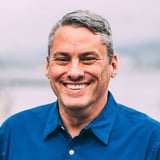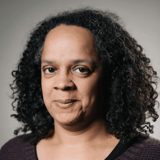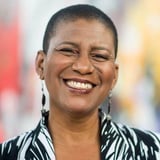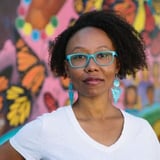Summary
In large organizations, design is often sparse or intentionally decentralized in a way that places it subservient to Product and Engineering—and ultimately limits its potential for impact. Knowing that, is it possible to create a basis for change? How might we address the decentralization of design with the goal of increasing design maturity and producing better outcomes? How can we apply the design process organization-wide and across silos? In this session, Jess Greco will discuss how the team at Mastercard is approaching change management through the lens of: Individuals and their needs The organization and its needs Efforts to align those two sets of needs Jess will also share results of Mastercard’s experimental Customer Experience Design Guild; investments in Learning & Development; and Guild-wide efforts to reframe how the organization views the practices and processes that support human-centered design.
Key Insights
-
•
Pandemic pressures accelerated MasterCard’s urgency to shift from legacy products to customer-centric new product development.
-
•
Design practitioners felt isolated before the creation of the Customer Experience and Design Guild.
-
•
The Guild grew from an informal network to a formal global community with over 180 members and 320 allies.
-
•
A skills inventory tied directly to the existing career framework was critical to gain leadership buy-in and drive focused learning plans.
-
•
Skills assessments revealed significant depth differences between dedicated specialists and generalists handling multiple roles.
-
•
MasterCard operates with three distinct organizational models influencing design skill development: embedded teams, decentralized networks, and tiny teams.
-
•
Small teams often focus on foundational skills but lack capacity to deliver truly differentiated products.
-
•
The Guild helps shift incentives across teams to prioritize customer-centric outcomes rather than just functional deliveries or activity checklists.
-
•
Strong cross-functional involvement—including HR, Talent, L&D, and product management—is vital to embedding cultural change.
-
•
Large design initiatives are most successful when connected to existing organizational frameworks that others already support or trust.
Notable Quotes
"The business isn’t necessarily interested in doing design better. They just want the outcomes that design can make possible."
"The new products will need to stand on their own sooner than later; we can’t rely on legacy products indefinitely."
"Designing for differentiation can create constructive friction with cross-functional partners."
"Without attribution, you can’t get funding. If it’s not funded, it’s not a priority."
"Strong product outcomes are so much more than the stuff we make; they reflect customer understanding and collaboration."
"Trying to hire one designer to do three jobs is impossible and will not support great outcomes."
"The Guild is much more than a community; we are shifting incentives strategically to enable better product decisions."
"If partnering with design makes it easier to meet product framework requirements, then everyone wins."
"The biggest standout factor for success was getting everyone bought in on our approach through deep cross-functional collaboration."
"Connecting new learning initiatives to a career framework that everyone already believes in makes adoption faster and easier."
Or choose a question:
















More Videos

"You need strong regional players with negotiation skills to navigate the split loyalties in global teams."
Adam Cutler Karen Pascoe Ian Swinson Susan WorthmanDiscussion
June 8, 2016

"UX directors often feel like this poor person in the middle here getting pulled in all these directions."
Peter MerholzThe Trials and Tribulations of Directors of UX (Videoconference)
July 13, 2023

"If you don’t tune it properly, sometimes you just don’t get what you want."
Lisa WelchmanCleaning Up Our Mess: Digital Governance for Designers
June 14, 2018

"Investing in sustainability today will yield dividends for future generations."
Vincent BrathwaiteOpener: Past, Present, and Future—Closing the Racial Divide in Design Teams
October 22, 2020

"OKRs are a tool for each of us to tidy our house and focus on what’s important."
Brenna FallonLearning Over Outcomes
October 24, 2019

"Thick data is the opposite of big data; it’s stories, qualitative, and crucial during moments of rapid change."
Tricia WangSpatial Collapse: Designing for Emergent Culture
January 8, 2024

"We used a Python algorithm with a correlation matrix to identify meaningful clusters from survey responses."
Edgar Anzaldua MorenoUsing Research to Determine Unique Value Proposition
March 11, 2021
"Knowledge needs to be thought of as a reusable circular process, not a linear one ending at project completion."
Designing Systems at Scale
November 7, 2018

"If my experiment made front-page news tomorrow, what would the headline be? Would my mother be proud?"
Erin WeigelGet Your Whole Team Testing to Design for Impact
July 24, 2024
















